How Often Should I Water Newly Planted Shrubs
Quick facts
- Newly planted trees and shrubs need regular and consistent watering until root systems establish.
- Root systems of trees and shrubs, whether bare root, balled and burlapped, or in a container, are severely reduced or restricted.
- After planting, root systems will grow and establish until they are much wider than the above ground portion of the plant.
When to h2o
Newly planted trees or shrubs require more frequent watering than established trees and shrubs. They should be watered at planting time and at these intervals:
- i-2 weeks after planting, water daily.
- 3-12 weeks later on planting, water every ii to 3 days.
- After 12 weeks, water weekly until roots are established.
How long does it take for tree and shrub roots to institute?
Newly planted shrubs are considered established when their root spread equals the spread of the above-basis canopy. In Minnesota, this volition take one to 2 years.
Establishment times for trees increases with tree size. Body caliper at planting time can be used to determine the fourth dimension it takes for roots to constitute.
Find the caliper of your tree:
- Measure the trunk diameter at 6 inches higher up the ground for diameters up to 4 inches.
- If the diameter is more 4 inches, measure at 12 inches in a higher place the ground.
How much to water newly planted trees based on size of body
How much to water
- When watering newly planted trees, apply 1-1.v gallons per inch of stem caliper at each watering (see table).
- When watering newly planted shrubs, utilize a volume of h2o that is 1/4 - i/iii of the volume of the container that the shrub was purchased in.
- As roots grow and spread, irrigation book volition need to exist increased.
Where to water
- Apply water direct over the root brawl.
- Exist sure to keep the backfill soil in the planting pigsty moist. This encourages the roots to expand across the root ball into the backfill soil.
- Tree roots grow approximately 18 inches per year in Minnesota, then expand the area being watered over time.
- Create a water reservoir by making a circular mound of earth three to iv inches high effectually the plant at the border of the root brawl.
- Use a dull trickle of h2o to fill up the reservoir to allow water to slowly infiltrate into and effectually the root brawl.
- Treegator® bags tin can also be used to provide a deadening delivery of water over the root balls of establishing copse and shrubs.
Make a reservoir over the root brawl for watering.
Treegator® bags hold xiv-fifteen gallons of water and release a slow trickle of water over v-9 hours.
Mulching copse and shrubs maximizes water uptake
When copse and shrubs are planted into turf, competition for nutrients, water, and space occurs below basis between turf roots and woody plant roots. Turf wins because its dense fibrous root organization prevents woody plants from producing water- and nutrient-arresting roots in the acme few inches of soil. As a result, woody institute institution and growth is slower in turf areas than in mulched or bare soil areas.
To optimize root production, water uptake, and establishment of newly planted trees and shrubs:
- Eliminate turf and weeds from the base of operations of the plant out to several feet beyond the establish canopy.
- Get out the meridian of the root ball bare and offset the mulch awarding at the outer edge of the root ball.
- Utilize a three-inch layer of organic mulch around newly planted trees and shrubs in a circle that extends several anxiety beyond the tree or shrub awning.
Mulching around newly planted trees and shrubs with organic materials (wood chips, pino needles, etc.) has several advantages over bare soil cultivation.
Mulch:
- Decreases water evaporation from soil.
- Serves as a sponge that prevents runoff around plants growing in heavy clay soils or on sloped sites.
- Helps to control seed germination and growth of weeds.
- Insulates soil and buffers extreme summer and winter soil temperatures.
- Reduces soil compaction from mowing equipment.
- Prevents impairment to stems and trunks past lawn mowers and weed cutters.
- Improves soil health (increases microbial activeness, nutrient- and h2o-holding chapters, soil pore spaces, and air penetration) every bit it decomposes.
Don't add more a 3-inch layer of mulch considering deep mulch applications may:
- Prevent movement of rain or irrigation water into the root ball of newly planted copse and shrubs. This can result in roots drying up and plant stress.
- Pb to root production and growth in the mulch. This oftentimes results in circling and stem-girdling roots.
- Reduce oxygen levels around roots and cause root suffocation.
- Continue poorly tuckered soils also wet, which favors root rot development.
- Keep bark excessively wet when piled around trunks and stems. This may lead to bark decay.
- Create habitat for rodents that chew bark and girdle trunks and stems.
Reviewed in 2018
How Often Should I Water Newly Planted Shrubs,
Source: https://extension.umn.edu/planting-and-growing-guides/watering-newly-planted-trees-and-shrubs#:~:text=Newly%20planted%20trees%20or%20shrubs,every%202%20to%203%20days.
Posted by: lopezbricip1961.blogspot.com

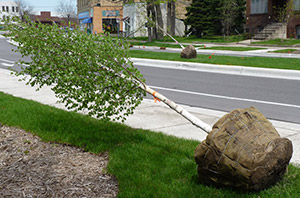
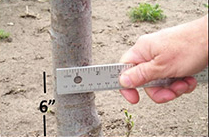
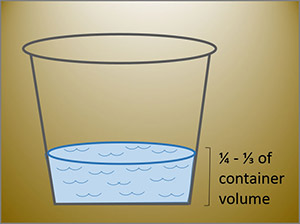
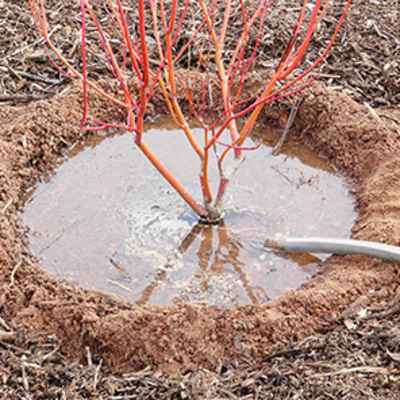
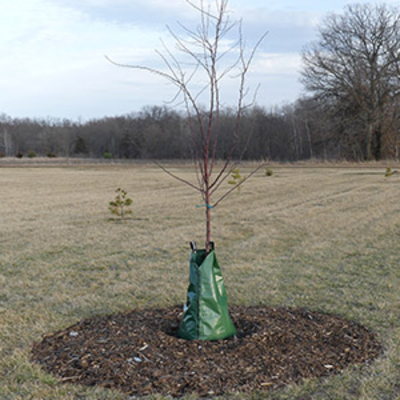
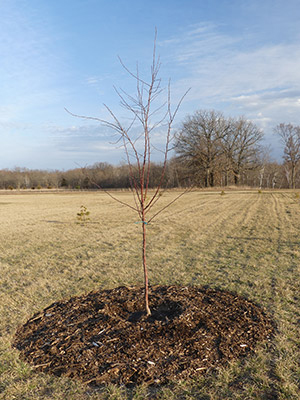

0 Response to "How Often Should I Water Newly Planted Shrubs"
Post a Comment